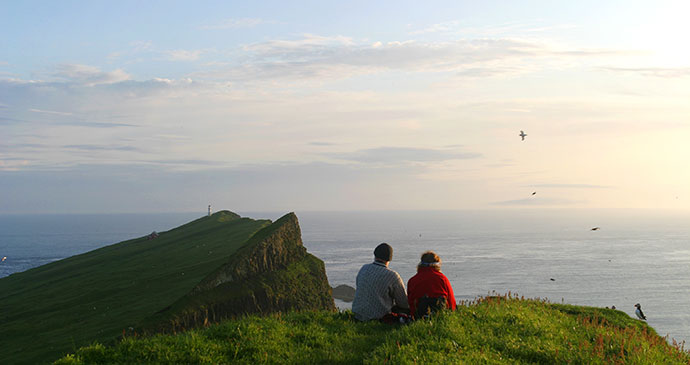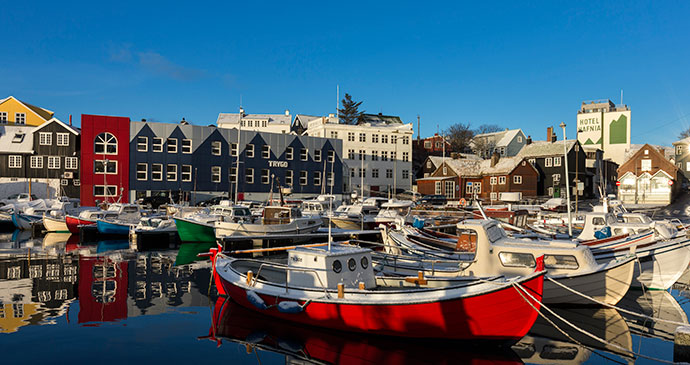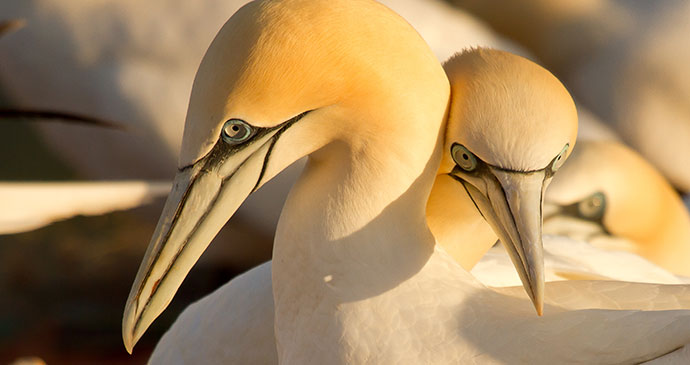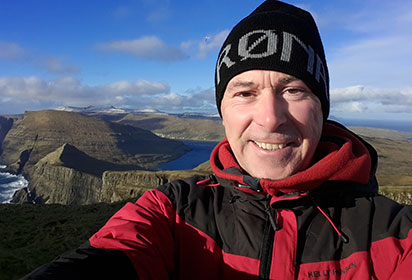Written by James Proctor
We chat to James Proctor, author of our Faroe Islands guidebook, about his first visit to the archipelago and his tips for a perfect 24 hours on the islands.
When and why did you first visit the Faroe Islands?
I first visited the Faroes back in the early ‘90s onboard the former Smyril which used to sail between Aberdeen and the Faroes. That ship has now been pensioned off and was last seen rotting in the docks in Dakar in Senegal having also served a stint in the French Caribbean. Even then Smyril was well past her best and the turbulent seas of the North Atlantic up to the Faroes on that crossing certainly proved a challenge. However, I loved it: wild, rough and bobbing like a cork. I’d actually gone up there to record some radio interviews. It’s a long story!
The Faroes are renowned for a rather unusual cuisine, what’s the strangest thing you’ve eaten on the islands?
Blubber! And I won’t be eating it again. Learn more about Faroese cuisine with KOKS Restaurant.
Of all the islands, do you have a favourite? And why?

I adore Mykines. I just love all the birds there and the sheer cliff faces. The walk out to the lighthouse on Mykineshólmur is quite magical and I never fail to be enchanted by the views of the sea from the cliffs. The village of Mykines is the Faroes at their most picturesque – tiny, wooden cottages with turf roofs, huddled either side of a mountain stream that cascades down the hillsides behind. The tumbledown churchyard with its giant angelica plants, too, is straight out of a film set.
How would you spend a perfect 24 hours in the Faroes?

I’d start in the capital, Tórshavn, and saunter around the old town, admiring the creaking, wooden buildings with turf roofs which are home to the Faroese government. Then, you just have to buy a traditional woollen sweater so potter round the shops and see what’s on offer. Check out the modern Faroese art at the national art gallery before hopping on the ferry across to Nólsoy, perhaps for a hike out to the lighthouse or just to nosy around the car-free village. Back in Tórshavn, time for dinner, and what better choice some a plate of the freshest fish you can imagine staight out of the North Atlantic right on the doorstep.
In addition to the iconic puffins, what are the other must-see wildlife on the islands?

Gannets! You have got to see them to understand how enormous they are. There’s a huge colony of them off the western edge of Mykineshólmur.
What advice would you offer for those interested in travel writing?
Choose a subject or country you’re passionate about. Go to the places you’re writing about and experience them at first hand. Then get it all down on paper, but just imagine you’re telling your best friend about your trip. No fancy this and that, just tell it how it is. Oh, and don’t expect to get rich!
What are your travel plans for the rest of 2016?
I’m updating several books this year and so will be in Sweden a fair amount of the summer. Once the dust settles I’m hoping to get some hiking done in the Yorkshire Dales National Park, a place which is exceptionally close to my heart. I am a Yorkshireman after all! In addition to the lovely scenery, I am fascinated by the linguistic links between Yorkshire and Scandinavia. Onwards from 3 August, you can hear my Yorkshire accent on Drystone Radio where I present the Wednesday Drivetime programme when I’m back home in the most beautiful part of England: North Yorkshire.
Looking to learn more about the Faroe Islands? Check out our comprehensive travel guide:

